Chamberlain CWPIRC Handleiding
Chamberlain
Bewegingsdetector
CWPIRC
Bekijk gratis de handleiding van Chamberlain CWPIRC (4 pagina’s), behorend tot de categorie Bewegingsdetector. Deze gids werd als nuttig beoordeeld door 65 mensen en kreeg gemiddeld 4.7 sterren uit 33 reviews. Heb je een vraag over Chamberlain CWPIRC of wil je andere gebruikers van dit product iets vragen? Stel een vraag
Pagina 1/4

1
Attach Motion Sensor box to
mounting plate with large silver
screw. Tighten screw until
Motion Sensor stays in place
when repositioned.
Motion Sensor
Swivel Bushing
Mounting PlateSun/Rain Shield
Carton Inventory
Assembly and Programming
1
Install 4 AA Alkaline batteries.
(Lithium batteries recommended
for colder environments.)
LED light will fl ash.
2
Antenna
ON
OFF
1 2
SWITCH SETTINGS
Switch #1 Switch #2
Learn
Button
OFF Low Sensitivity
ON High Sensitivity (Default)
NOTE: To avoid detection of small animals
move Switch #2 to OFF.
Motion Sensor
SWITCH #1:
SWITCH #2:
A Ensure Base Station and
Motion Sensor are in close
proximity to each other. Press
and release Learn Button
on Base Station. Buzzer will
sound.
B Within 60 seconds, press the
Learn Button on the inside of
the Motion Sensor. LED light
will illuminate and Base Station
will buzz.
3Learn Button
Test Motion Sensor by waving
hand in front of sensor. LED light
should fl ash and the Base Station
will buzz X number of times
indicating which sensor has been
activated.
Insert battery pack facing away
from circuit board and fasten
cover with the smallest screws
(provided).
NOTE: Ensure the batteries do
not touch the circuit board and
the antenna and battery wires are
not pinched.
4
5
Overview
Learn Button
WARNING: This product can expose you to chemicals including lead, which are known to the State of California to cause cancer or birth
defects or other reproductive harm. For more information go to www.P65Warnings.ca.gov
WIRELESS MOTION ALERT
ADD-ON SENSOR
MODELS CWPIR AND CWPIRC
The Wireless Alert Sensor is a Passive Infra-Red Motion Sensor that detects movement of people and vehicles. Each sensor has its own unique
ID, for a secure radio link. The base station (not provided) can learn the signals of up to 8 sensors. The base station gives a single beep for the
fi rst sensor that is programmed, a double beep for the second, and so on. Additionally, multiple base stations can work with the same sensor to
sound in different places.
OFF 15 Feet (4.5 m) Detection Range
30 Feet (9.1 m) Detection Range
(Default)
ON

MOTION SENSOR INSTALLATION
Mount Motion Sensor
horizontally on solid surface 3-5
feet (1-1.5 m) off the ground and
within 1/2 mile (0.8 km) of Base
Station (rotate sensor to access
screw holes). Unit should be able
to swivel as needed.
Attach sun/rain shield.
NOTE: Keep Motion Sensor
antenna away from metal
objects. Do not mount Motion
Sensor in direct sunlight, near
moving tree branches, or in the
path of a sprinkler system.
4 feet (1.2 m)
10-20 feet (3-6 m)
Vehicle Alert Installation: For cars, the best mounting position is
about 4 feet (1.2 m) high, between 10-20 feet (3-6 m)back, and
angled to see the back of car after passing the sensor.
6
The Motion Sensor lights up, but the Base Station does not
respond.
The Motion Sensor must be programmed to Base Station (See Step
3). Ensure Base Station is on and the volume is turned up.
Motion Sensor is detecting motion only part of the time.
Ensure the Motion Sensor is set to the High Sensitivity setting (See
Step 2). To detect cars, it is best to mount Motion Sensor at height
of car’s motor and have it between 10-20 feet (3-6 m) from the
road. Swivel sensor as needed.
The Wireless Motion Alert Sensor is giving false alarms.
Check for moving tree branches or insects in sensor window.
Motion Sensor can also be triggered by light shining directly in
sensor window, such as refl ected sunlight, or motion in front of a
light source.
It is possible that condensation has built up on the sensor. Wipe
condensation from Motion Sensor with cotton swab. Let it sit
inside for a few hours, open to the air, without the batteries and it
should correct itself.
Check Sensor Switches on Motion Sensor. See Switch Settings.
Base Station beeps every 30 minutes.
The batteries in the Base Station or the Motion Sensor(s) are low.
Replace the 4 AA batteries. Check the Motion Sensor(s), if the LED
illuminates on all of the Motion Sensors, change the batteries in the
Base Station.
The Wireless Motion Alert Sensor is not getting expected
transmission range.
Keep both antennas vertical and keep Motion Sensor antenna away
from trees and metal objects. Ensure Base Station is in clearest
possible sight of the Motion Sensor. The less objects between the
devices, the longer the range.
NOTE: The manufacturer is not responsible for any radio or
TV interference caused by unauthorized modifi cations to this
equipment. Changes or modifi cations not expressly approved by
the manufacturer could void the user’s authority to operate the
equipment.
Troubleshooting
NOTICE: This device complies with Part 15 of the FCC rules and Industry Canada’s license-exempt RSSs.
Operation is subject to the following two conditions: (1) this device may not cause harmful interference,
and (2) this device must accept any interference received, including interference that may cause undesired
operation.
Any changes or modifi cations not expressly approved by the party responsible for compliance could void
the user’s authority to operate the equipment.
This device must be installed to ensure a minimum 20 cm (8 in.) distance is maintained between users/
bystanders and device.
This device has been tested and found to comply with the limits for a Class B digital device, pursuant to part
15 of the FCC rules and Industry Canada ICES standard. These limits are designed to provide reasonable
protection against harmful interference in a residential installation. This equipment generates, uses and
can radiate radio frequency energy and, if not installed and used in accordance with the instructions, may
cause harmful interference to radio communications. However, there is no guarantee that interference will
not occur in a particular installation. If this equipment does cause harmful interference to radio or television
reception, which can be determined by turning the equipment off and on, the user is encouraged to try to
correct the interference by one or more of the following measures:
• Reorient or relocate the receiving antenna.
• Increase the separation between the equipment and receiver.
• Connect the equipment into an outlet on a circuit different from that to which the receiver is connected.
• Consult the dealer or an experienced radio/TV technician for help.
2
Installation

3
Attacher la boîte de détecteur
de mouvement sur la plaque
de montage avec la grande vis
argentée. Serrer la vis jusqu’à ce
que le détecteur de mouvement
reste en place quand ajusté.
Vue générale
Inventaire de l’emballage
Montage et Programmation
1
Installer les 4 piles alcalines
AA. (Des piles au Lithium
sont recommendées pour les
environnements froids.) Le DEL
lampe clignote.
2
Antenne
1 2
RÉGLAGE DES COMMUTATEURS
Arrêt Sensibilité basse
Marche Sensibilité haute (Défaut)
REMARQUE : Pour éviter la détection de petits animaux, mettre
l’interrupteur n° 2 sur l’arrêt (OFF).
INTERRUPTEUR N° 1 :
A Vérifi er que la station de base
et le détecteur de mouvement
sont proches l’un de l’autre.
Appuyer momentanément
sur le bouton « Learn » de la
station de base. L’avertisseur
doit émettre un son.
B Dans les 60 secondes,
enfoncer le bouton « Learn »
situé à l’intérieur du détecteur
de mouvement. Le voyant à
DEL s'allume et la station de
base bourdonne.
3Bouton « Learn »
Faire un essai du détecteur de
mouvement en bougean une
main devant le détecteur. Le
voyant à DEL clignote et la
station de base bourdonne X fois
pour indiquer quel détecteur a
été activé.
Insérer le porte-piles faisant face
à la direction opposée au circuit
imprimé et installer le couvercle
(fournie).
REMARQUE : Vérifi er que les
piles ne touchent pas le circuit
imprimé et l’antenne et que les
fi ls des piles ne sont pas pincés.
4
5
Détecteur de mouvement
Douille tournante
Plaque de montageÉcran solaire et anti-pluie
Détecteur de movement
Interrupteur n° 1
Interrupteur n° 2
Bouton
« Learn »
INTERRUPTEUR N° 2 : Marche
Arrêt
Bouton « Learn »
Le détecteur de mouvement sans fi l est un dispositif infrarouge passif qui détecte le mouvement des personnes et des véhicules. Chaque
détecteur de mouvement a sa propre identifi cation pour permettre un lien radio sécurisé. La station de base (non fournie) peut recevoir les
signaux de 8 capteurs au maximum. La station de base émet un seul beep pour le premier capteur programmé, un bip double pour le second,
et ainsi de suite. De plus, plusieurs stations de base peuvent fonctionner avec le même capteur pour émettre une alarme sur des emplacements
différents.
DÉTECTEUR DE MOUVEMENT SANS FIL
SUPPLÉMENTAIRE
MODÈLES CWPIR ET CWPIRC
AVERTISSEMENT : Ce produit peut vous exposer à des produits chimiques comme le plomb, reconnu par l’État de la Californie comme cause
de cancers, d’anomalies congénitales et d’autres problèmes liés à la reproduction. Pour plus d’informations, visitez www.P65Warnings.ca.gov
Arrêt Plage de détection de 4,5 m (15 pi)
Plage de détection de 9,1 m (30 pi)
(Défaut)
Marche
Product specificaties
| Merk: | Chamberlain |
| Categorie: | Bewegingsdetector |
| Model: | CWPIRC |
Heb je hulp nodig?
Als je hulp nodig hebt met Chamberlain CWPIRC stel dan hieronder een vraag en andere gebruikers zullen je antwoorden
Handleiding Bewegingsdetector Chamberlain

14 April 2023

7 April 2023

14 Maart 2023
Handleiding Bewegingsdetector
- Renkforce
- Honeywell
- Swann
- Hikvision
- XQ-Lite
- Olympia
- GEV
- Pentatech
- Axis
- Arlo
- Vemer
- EQ-3
- Dahua Technology
- Massive
- Niko
Nieuwste handleidingen voor Bewegingsdetector
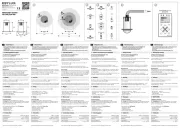
6 Juli 2025
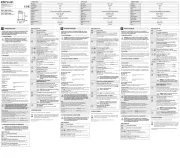
6 Juli 2025
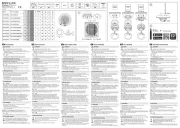
5 Juli 2025

5 Juli 2025
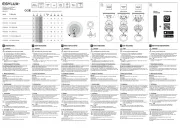
5 Juli 2025
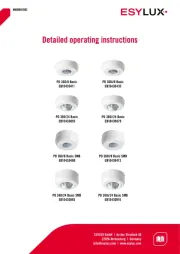
5 Juli 2025
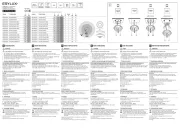
5 Juli 2025
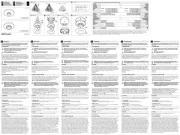
5 Juli 2025
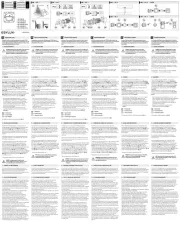
5 Juli 2025
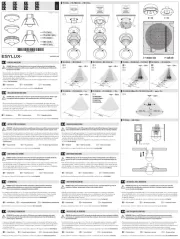
4 Juli 2025